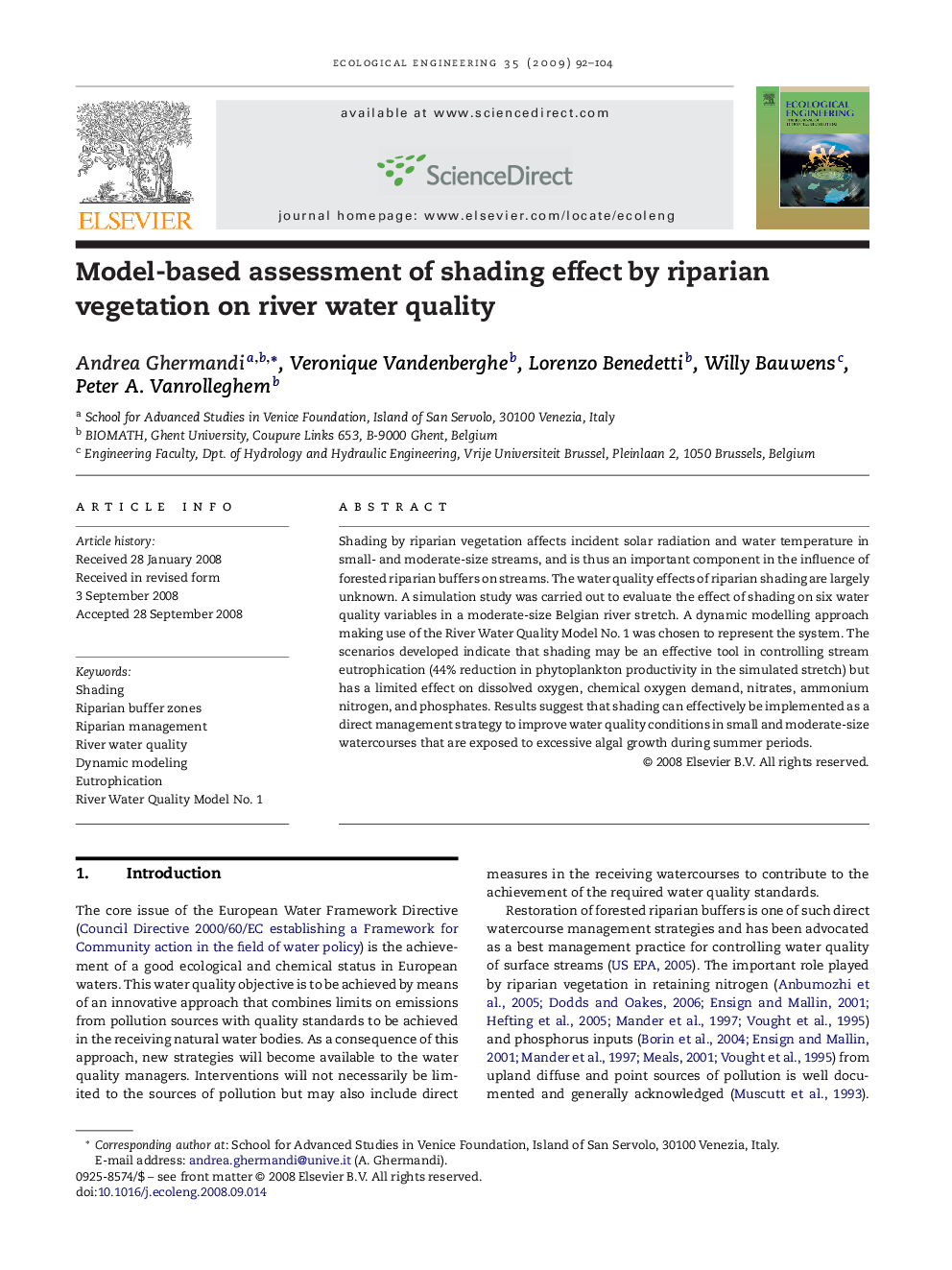| Article ID | Journal | Published Year | Pages | File Type |
|---|---|---|---|---|
| 4390665 | Ecological Engineering | 2009 | 13 Pages |
Abstract
Shading by riparian vegetation affects incident solar radiation and water temperature in small- and moderate-size streams, and is thus an important component in the influence of forested riparian buffers on streams. The water quality effects of riparian shading are largely unknown. A simulation study was carried out to evaluate the effect of shading on six water quality variables in a moderate-size Belgian river stretch. A dynamic modelling approach making use of the River Water Quality Model No. 1 was chosen to represent the system. The scenarios developed indicate that shading may be an effective tool in controlling stream eutrophication (44% reduction in phytoplankton productivity in the simulated stretch) but has a limited effect on dissolved oxygen, chemical oxygen demand, nitrates, ammonium nitrogen, and phosphates. Results suggest that shading can effectively be implemented as a direct management strategy to improve water quality conditions in small and moderate-size watercourses that are exposed to excessive algal growth during summer periods.
Keywords
Related Topics
Life Sciences
Agricultural and Biological Sciences
Ecology, Evolution, Behavior and Systematics
Authors
Andrea Ghermandi, Veronique Vandenberghe, Lorenzo Benedetti, Willy Bauwens, Peter A. Vanrolleghem,
